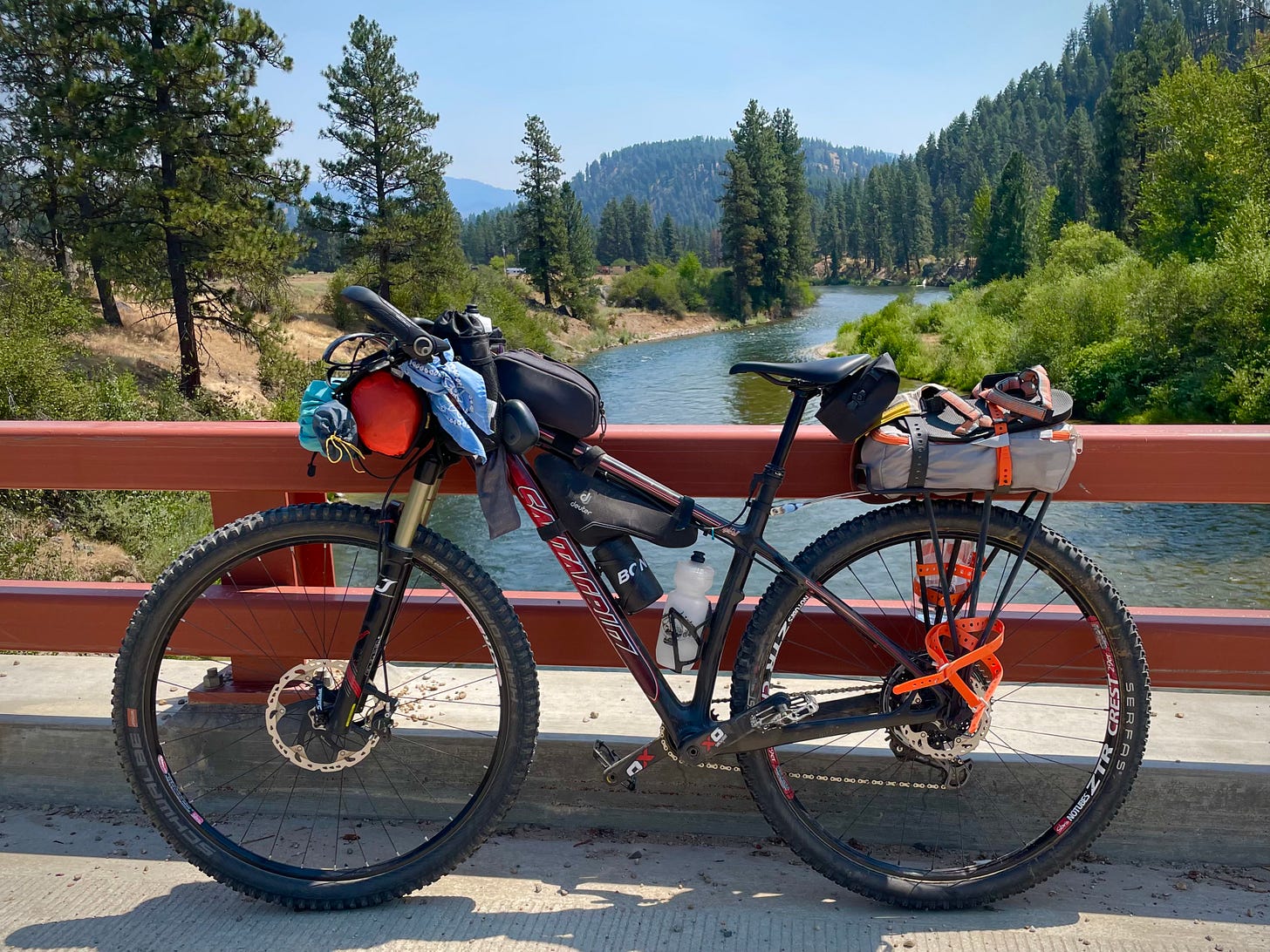Bikepacking Basics | Bike Frame Materials
This 2nd installment in our Bikepacking Basics Series covers the common materials used to build bike frames, along with pros and cons for each.
As part of our ongoing project to transition away from Facebook, this Bikepacking Basics Series is for newer riders, and will catalog some of the information previously covered in depth in the Facebook group. While you can find this information in many places, we hope that this will be an easy and unintimidating place to start.
Much of this article is credited to information posts by Jill Hamilton, IWBP member since year one and Smoke ‘n’ Fire 400 finisher. Please add your own experience or questions in the comments below.
What type of frame material to use for bikepacking is a big topic with a lot of different opinions. Starting with a few basic pointers:
Start with what you have! As long as it’s in good working order and not an e-bike or a road bike, chances are the bike you already own will work, especially for getting started.
You don’t need to worry much about frame material! But knowing the basics and getting comfortable with the lingo can help us all to feel more a part of the broader bikepacking community.
Most differences in frame material are small, and more theoretical than proven. It can take many years to learn to distinguish the “ride feel” of different materials. If you get more into it, or more competitive, some of the tips below will become increasingly relevant.
Ride feel matters more for longer rides, and is more noticeable with rigid frames and smaller wheels / tires. In turn, frame material’s effect on ride quality will be less noticeable on larger volume tires or with suspension.
Alloy
AKA aluminum (while “aluminum” is technically more accurate, “alloy” is the term that most use in the biking world).
Alloy has gotten a bit of a bad rap in the last 20 years or so, but is once again becoming more popular and appreciated lately. Don’t let anyone tell you it’s not a good material for bikes!
Pros
Lightweight.
Least expensive option.
Cons
Less compliant, meaning it doesn’t flex and absorb vibration as well as other materials. The result can be a bike that rides a bit on the stiff side, which can be less comfortable on longer rides.
Alloy tubing has to have a larger outer diameter to be sufficiently strong. (With practice, you can easily spot an alloy frame as they will have thicker tubing than steel or titanium, plus welded joints unlike carbon.)
Doesn’t last as long as steel, and cannot be repaired (welded).
Steel
AKA chromoly (an older term that isn’t used much anymore).
Steel is the original bike frame material, and remains very popular, especially among the bikepacking / adventure biking crowd. It definitely has a retro-cool feel to it. Hence the term “Steel is Real!”
Pros
Less stiff and more compliant than alloy or carbon. This results in a more comfortable ride because the frame actually flexes a small amount.
Steel tubes can also be drawn thinner and smaller, giving a larger frame triangle, tubing that is easier to wrap things around, and a classic aesthetic that bikepackers tend to love.
A well-made steel frame can last a lifetime with proper care.
Steel can be repaired (welded) almost anywhere in the world. Sometimes it can be bent back into shape. This makes it the material of choice for very big / international trips. (If you’re going to Mongolia, take steel!)
Cons
Subject to corrosion (rust).
Heavier material compared to others on this list, but it’s worth noting we’re usually talking about a 2-3 lb. difference.
Carbon
AKA carbon fiber, plastic :)
Pros
Lightest material in this list
Strong and stiff. This makes for efficient power transfer (more of what you put into the pedals gets transferred to the wheels).
Good vibration dampening, and generally considered to have a good ride feel.
Cons
Expensive
Shorter lifespan compared to steel or titanium
Subject to damage (structural, not just cosmetic) including breaks and wear from rubbing.
Not easily repairable. Any frame damage usually means the bike needs to be retired.
Titanium
AKA space metal, ti
Bikepacking.com describes titanium as having an “almost mythical status” among bikepackers, with an “allure that transcends logic and good sense.” It’s lightweight, rare, beautiful, and expensive.
Pros
Aesthetics or a coolness factor is a huge part of titanium’s appeal. Many love the utilitarian beauty of unpainted ti.
Highly resistant to corrosion (rust), which is one reason it’s usually left unpainted.
Unpainted surfaces make it more resistant to scratches and rubbing. When scratches do occur, they can be buffed out to good as new.
A well-made ti frame can last a lifetime with proper care.
Thin tubing, similar in size to steel.
Cons
The most expensive material in this list. Generally a ti frame will be $1-2K more expensive than a comparable steel frame.
Can be repaired (welded) in some places, but requires special equipment. (Again, if you’re going to Mongolia, take steel.)
Summary
As noted above, frame material doesn’t matter as much as most in the biking world make it seem. Use this article to familiarize yourself with terminology and basic pros and cons. Ask questions here or come ride with us to see what others like.
Most importantly, ride what you have, and don’t let anyone tell you that you’re doing it wrong! :)








